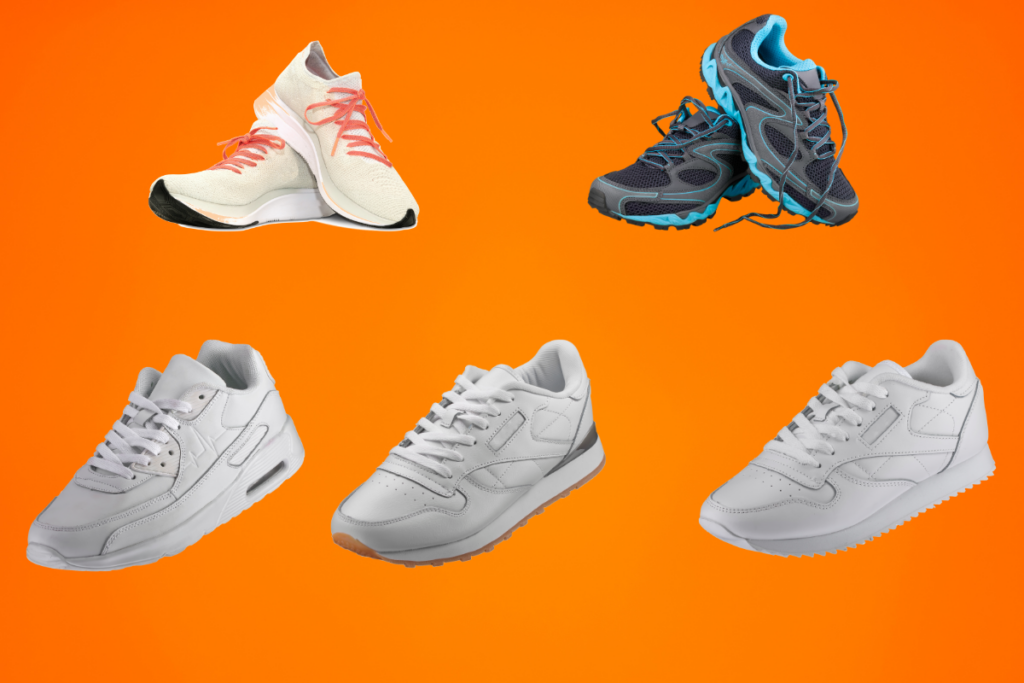The right shoes are key for comfort and performance in any activity. They also help prevent injuries. Let’s explore what makes running shoes different from normal shoes. We need to know their unique roles and benefits.

1. Definition and Purpose
– Running Shoes: Craftsmen shape running shoes to meet the precise needs of runners. They have advanced cushioning, strong support, and durable materials. These shoes capture impact and rebound energy with every step taken.
– Normal Shoes: In contrast, normal shoes are a wide range of everyday footwear. They cover uses from casual wear to workplace attire. They prioritize versatility in style and comfort rather than sport-specific functionality.
2. Design and Construction
– Running Shoes: The design of running shoes focuses on agility and performance. They use lightweight materials, like mesh and synthetic overlays. They promote breathability and moisture management. Engineers designed the soles for optimal traction, flexibility, and durability. These are crucial for enduring long distances and different terrains.
– Normal Shoes: Normal shoes use a mix of materials, like leather and canvas. This caters to fashion trends and personal tastes. They have many styles and colors. They reflect their use, from formal events to casual outings. Sole designs differ between boots, sneakers, and sandals. Dress shoes have sturdy, supportive soles. Casual sneakers have flexible, cushioned ones.
3. Features Comparison
– Running Shoes: Their specialized features distinguish running shoes.
Cushioning: It absorbs impact while running. This minimizes strain on joints and muscles.
Arch Support: Designed to fit runners’ natural gait and biomechanics. It improves stability and comfort.
Heel-to-Toe Drop: It promotes a natural foot movement. This is key to keeping momentum and reducing fatigue.
– Normal Shoes: Shoes focus on comfort, offer stability, and showcase a fashionable look.
Comfort: Made for long wear, it suits various daily activities.
Style: A mix of fashion trends and personal tastes, with many aesthetics.
Support provides comfort but does not meet specific sports activity demands.
4. Performance and Functionality
– Running Shoes: Engineers optimize running shoes for performance.
Enhanced Stride: It boosts running efficiency and speed. This helps athletic performance.
Versatility: Works on various running surfaces, from tracks to trails. It suits distances, including specialized types like trail running shoes for rough terrain.
– Normal Shoes: Normal shoes excel in everyday functionality.
Practicality: Perfect for various daily tasks. It offers comfort and style for the office, social events, or casual walks.
Performance Limitations: They are versatile. But, they lack features to boost performance or endure rigorous sports.
5. Usage and Recommendations
– Running Shoes:
Runners and athletes: for those who run or compete in sports.
Considerations: Choose shoes based on foot mechanics and pronation. Also, consider specific running styles. This will maximize comfort and performance.
– Normal Shoes:
Everyday Wear: Perfect for office environments, casual outings, and various social activities.
Considerations: Choose based on comfort, style, and occasion.
6. Factors to Consider When Choosing
– Biomechanics: Know your foot’s structure and mechanics. They ensure support and comfort.
– Activity-Specific Needs: Match the shoe type to its use—running, work, or leisure. This optimizes functionality and performance.
Running shoes differ from normal shoes. This shows the need to choose footwear for specific activities and personal needs. Knowing these differences helps people make better choices. This boosts comfort, support, and satisfaction in daily life and sports. Choosing the right shoes is not about style. It’s about peak performance and foot health.
